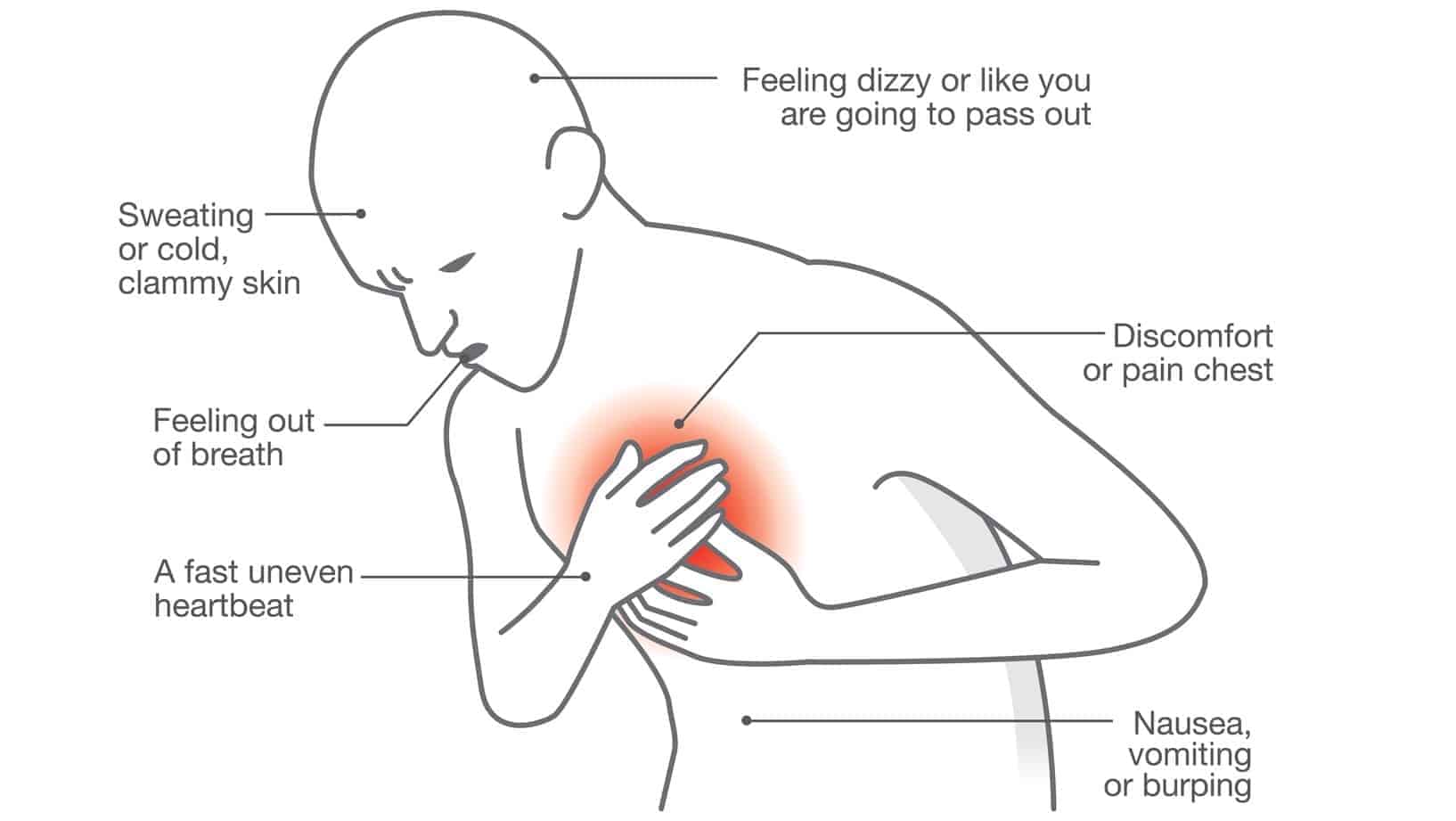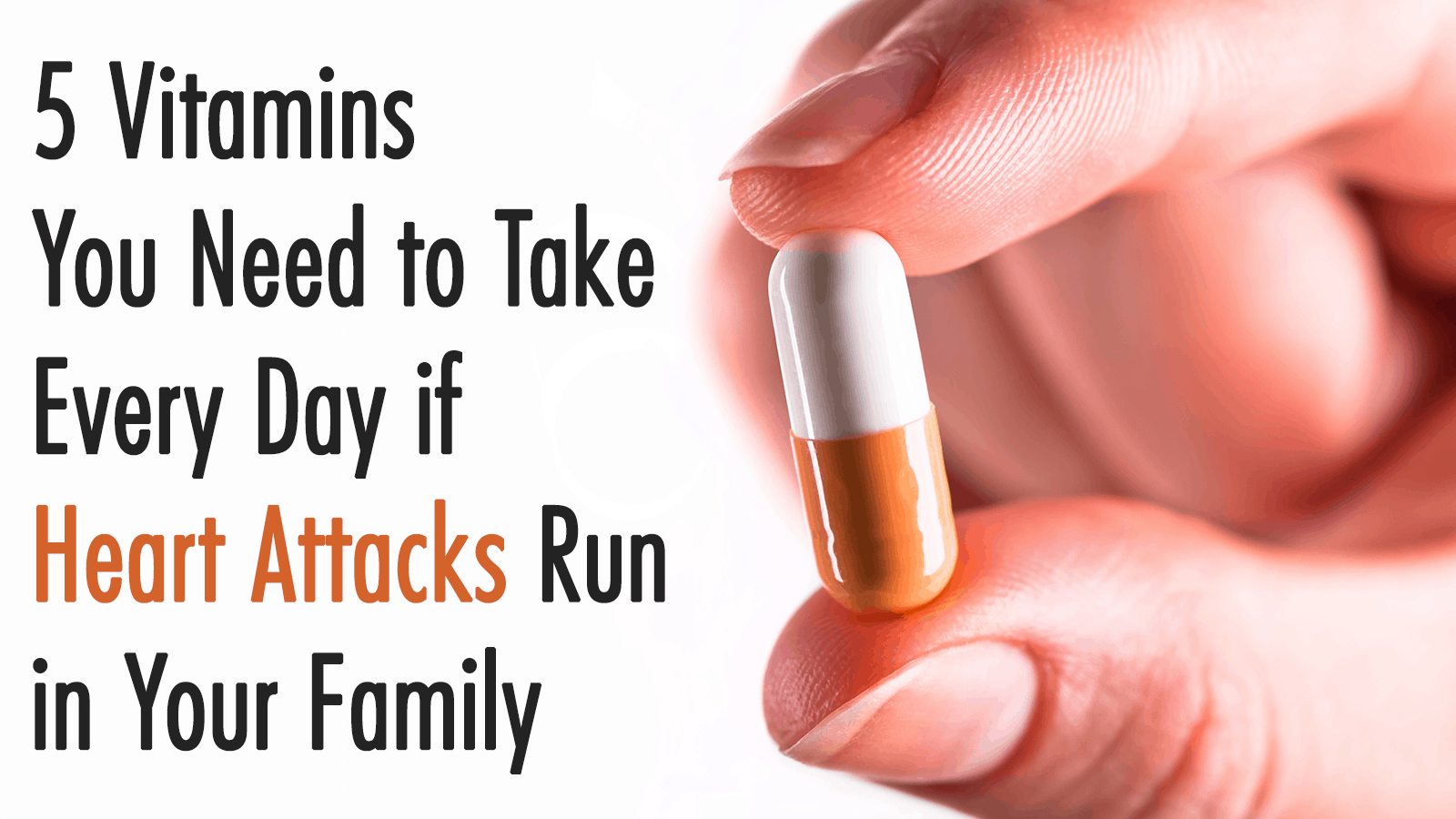There is no other way to put it – cardiac arrest is real. It tends to strike without warning and often results in a fatality in less than ten minutes. Outside of a hospital setting, this condition is fatal at least 90 percent of the time. Over 350,000 Americans are struck by cardiac arrest each year, and most of these cases happen outside of hospitals. Despite these grim statistics, all is not lost. You can prevent a cardiac arrest by learning how to identify the early symptoms of the condition.
What is Cardiac Arrest?
Cardiac Arrest (CA) refers to a condition characterized by the sudden and unexpected loss of heart function, consciousness, and breathing. The condition occurs as a result of an electrical disturbance in the heart which causes a disruption in the pumping action, thereby inhibiting blood flow to the rest the body.
CA, however, is not to be confused with a heart attack. A heart attack occurs when a blockage restricts the flow of blood to certain parts of the heart. Nevertheless, heart attacks can trigger electrical disturbances that eventually lead to CA.
CA is a medical emergency that can result in sudden death if not treated immediately. However, with fast and appropriate medical care, the chances of fatalities are greatly reduced.
Moreover, if it occurs outside of a hospital, administering CPR or compressions to the chest in addition to the use of a defibrillator will enhance the victim’s chances of survival before emergency services arrive.
What Causes Cardiac Arrest?
The immediate cause of CA is an abnormality in the heart’s rhythm – arrhythmia – which is usually caused by issues within the heart’s electrical systems.
Unlike other muscles in the body which rely on nerve connections in order to receive the necessary electrical stimulations that enable them to function, the heart has a sinus node – a specialized group of cells – that serve as its own electrical stimulator. This stimulator is situated in the right atrium – upper right chamber of the heart. The sinus node works by generating electrical impulses which flow through the heart in an orderly manner to synchronize your heart rate while coordinating the pumping of blood from the heart to the body.
Consequently, if there is an issue with either the sinus node that inhibits the correct flow of electric impulses through the heart, there is a heightened chance of arrhythmia occurring, thus causing the heart to either beat too fast, too slow, or in irregular patterns. Most of the time, however, these interruptions are momentary and harmless. Sometimes, however, they can be serious, thus leading to a sudden stop in heart function – CA.
An arrhythmia, known as ventricular fibrillation, is the most common cause of CA and is characterized by rapid and erratic electrical impulses which cause the heart’s ventricles to vibrate aimlessly instead of pumping blood.
Nonetheless, CA-causing arrhythmias do not typically occur by themselves. As such, an individual with a healthy heart is not likely to develop such an arrhythmia unless there is an outside trigger such as trauma to the chest, using or abusing certain drugs, or an electrical shock.
Identifying a Cardiac Arrest
If you go through CA, there isn’t much you can do for yourself as you are going to become unconscious within seconds. Nevertheless, it is still important to know how to identify an ongoing CA so that you can share it with your loved ones or those who are frequently around you. This will ensure that they are prepared to act in case it does occur.
An individual experiencing CA tends to collapse and stop responding almost immediately. They do not respond to touch or verbal commands. They may have extremely faint breathing and an almost non-existent pulse. At this point, the clock has already started ticking, and brain damage might begin almost immediately. Death may occur at any time.
Cardiac Arrest Symptoms
Half of the individuals who suffer from CA do not exhibit symptoms. This is because the symptoms associated with this disorder are either vague, mild, or can be easily confused with other conditions such as flu, indigestion, and other similar illnesses. The trick, therefore, is to know whether you are at risk of getting a CA, so you do not downplay its symptoms. These warning signs may occur in as little as a day to the attack or up to a month in advance. Cardiac arrest symptoms include:
Chest pain
Heart palpitations
Irregular heartbeat
Shortness of breath or wheezing
Lightheadedness
Fainting
Dizziness
Flu-like symptoms such as nausea and abdominal and back pain.
Risk Factors
As previously mentioned, about half of all individuals who experience CA do not have prior warning signs. Nevertheless, the majority of these individuals do have identifiable risk factors for this disorder. Therefore, it is essential that you find out whether you are at an elevated risk for CA. And even though CA is not the same as coronary heart disease or a heart attack, they do share most risk factors. These include:
A family history of coronary heart disease
Obesity
High blood cholesterol
High blood pressure
Smoking
A sedentary lifestyle
Diabetes
Taking too much alcohol
A previous heart attack
A previous CA
Family history of heart diseases
Old age
Being male
Using drugs such as amphetamines and cocaine
Heart Conditions that are Likely to Result in a CA
Life-threatening arrhythmias typically develop if an individual has a pre-existing heart condition, such as:
Coronary artery disease
This disease is the most common cause for CA. It is a condition characterized by the clogging of the arteries by deposits such as cholesterol which reduce blood flow to your heart, making it harder for it to effectively conduct electrical impulses.
Cardiomyopathy (Enlarged Heart)
This is a condition where the heart’s walls stretch or thicken. In either situation, the muscles become abnormal and may lead to heart tissue damage, thus triggering arrhythmias.
Congenital Heart Disease
If CA occurs in a young individual, it could be as a result of a heart disorder they have had since birth. Moreover, even adults who have had corrective treatment for their congenital heart disease are still at a heightened risk of CA.
Tips for Recovery
Recovering from a CA implies putting effort into making your heart stronger while limiting the risk factors. The following are some useful tips that will help make your heart less vulnerable.
1. Eat Heart-Healthy Foods
Protecting yourself from a CA can be as easy as taking the right foods. Experts agree that our bodily health is largely dependent on our dietary patterns. Eating foods that promote heart health can go a long way in preventing a CA.
2. Take Your Vitamins
Unfortunately, most of the foods consumed by the general population are deficient in vitamins. Vitamins play an essential role in our body systems. Your heart is your body’s powerhouse, and thus, it requires all the help it can get so that it can maintain optimal function. Vitamins are incredibly beneficial towards this cause as well. Here is a detailed list of vitamins that can help prevent a heart attack.
3. The Right Habits
In almost every aspect of life, the habits you assume will either make you or break you. Healthy habits are hard to adopt for most people due to the effort they require. Understandably, you would rather rest on the couch and watch your favorite T.V show after a long hard day of work rather than strap on your running shoes and jog a couple of miles. Eating healthy can be expensive as well as requiring a lot of preparation. Going for routine medical checkups is a hassle you would rather avoid. Smoking and drinking alcohol helps you unwind after a long day or week.
Nonetheless, they are all bad habits, and after years of indulging in these habits, your body’s organs will be worse for wear. It is not surprising that most of the risk factors for CA are essentially ‘bad habits.’
Drop habits that compromise your heart’s health and instead assume good habits to keep cardiac arrest symptoms at bay.
4. Know How to Spot a Heart Attack
Being able to identify cardiac arrest symptoms can be the difference between life and death. As mentioned earlier, CA is often triggered by other conditions. Heart attacks are among the prevalent triggers for CA. When a heart attack occurs, it is often as a result of severe coronary artery disease, which triggers ventricular fibrillation that might lead to sudden CA. Moreover, a heart attack typically leaves scar tissue in its wake. This scar tissue might disrupt the smooth movement of electric impulses, thereby leading to life-threatening arrhythmias. To avoid this, it is important to know how to identify a heart attack before it happens to avoid triggering cardiac arrest.
Conclusion
Heart complications are almost always fatal. It is, therefore, crucial that you take all the precautions necessary to protect yourself by strengthening your heart. Use this article as a guide.














 Community
Community

